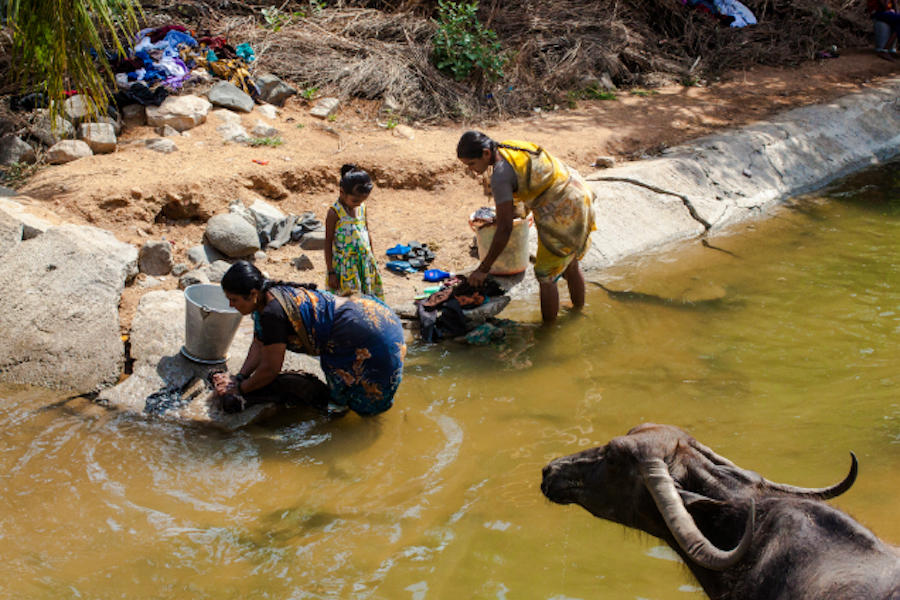You would think that in 2020 we’d have everything figured out. You would expect cures for illnesses, vaccines for viruses and no deadly outbreaks of horrible diseases. But we don’t live in an ideal world. In fact, there’s a new pandemic called the nCoV-2019 in China and the past decade was full of horrible disease outbreaks that infected hundreds of thousands of people and killed many of them too. Let’s take a look at 8 biggest infectious disease outbreaks of the last decade and learn a little about how to identify them and how to protect ourselves from them.
1. Bird Flu – Avian influenza (H7N9)
We remember the big outbreak of bird flu. It originated in China and there were several flare-ups in other countries in the past decade. The virus can affect birds, animals and humans, but in most cases, it’s limited to birds. However, if humans come in contact with infected birds or handle raw poultry meat without reasonable precautions they can become infected. The first symptoms are very flu-like: cough, fever, runny nose, muscle aches. But this virus progresses faster than flu and if it goes untreated can cause pneumonia, sepsis, organ failure and can be deadly. The best way to prevent it is to stay away from infected birds, and properly (fully) cook poultry and eggs. If symptoms are caught early one the disease is fully treatable.

2. Ebola
There was a massive outbreak of Ebola in West Africa in 2014 that killed a lot of people. The disease is caused by the Ebola virus, the origin of which is not exactly determined but scientists agree that it most likely came from bats. It is spread only by coming in contact with a contaminated person’s blood or bodily fluids. It’s not airborne. The early symptoms are similar to regular flu and include fatigue, fever, muscle pain, sore throat, headache, but as the disease progresses the symptoms become worse. Nausea, diarrhea, and extreme unexplained bleeding follow and if untreated it’s deadly. There is no vaccine or approved medicine for Ebola but supportive hospital care can improve the likelihood of survival. Experimental meds are being tested and some are pending approval.

3. Plague
This might be shocking,
but Plague is still around. Yeah, that horrible “Black Death” that wiped out
half of Europe in the 14th century still exists and there’s usually about
1000-2000 cases every year around the world. These days there’s a medicine that
cures it, of course, but it’s still a horrible disease that is fatal if not
treated. There was an outbreak of it in Madagascar in 2017 and in fact,
Madagascar has plagued season every year. Plague is caused by bacteria called
Yersinia pestis which is transmitted from rodents to humans via rodent fleas.
There are three types of plague bubonic, pneumonic, and septicemic and all
three are extremely dangerous and fatal if untreated.

4. Cholera
Cholera is caused by ingesting food or water with Vibrio cholerae bacteria in it. It’s generally found in places with poor sewage systems or contaminated water. The symptoms are severe vomiting and diarrhea which causes dehydration if untreated the infectious disease can be fatal due to dehydration. The biggest outbreak of cholera in the past decade happened in Yemen in 2017. A shocking number – 862,858 people were infected and 2,177 died. The disease is fully curable these days if provided with needed medical treatment. But cholera is endemic, so when traveling to places where there are regular outbreaks one should always only drink safe bottled water.

5. Nipah virus (NiV)
The Nipah virus outbreak
happened in India in 2018. There is no medication or vaccine specific to this
virus, but the World Health Organization has made it their priority to research
that. The Nipah virus is zoonotic, which means it passes from infected animals
to humans, but it can also be transmitted from human to human and through
infected food. In the two main outbreaks, the disease was passed on to people
from infected pigs and fruit bats. The initial symptoms are fever, sore throat,
headache, mental confusion and dizziness. If left untreated it can cause
seizures and encephalitis which can rapidly cause come and death. So far
symptomatic treatment has been successful but the research for medicine that
would cure the Nipah virus is ongoing.

6. The Middle East Respiratory Syndrome Coronavirus (MERS)
MERS is also a zoonotic virus and it’s the biggest outbreak was reported in Saudi Arabia. It seems like the virus came from contact with infected camels. In some people infected with the virus is asymptomatic, in others, it presents with fever, shortness of breath and pneumonia. In 35% of reported infected cases, the disease was fatal. There are no specific vaccines to prevent it and no MERS specific meds have been certified yet. The best way to prevent the disease if to avoid contact with sick animals and people and practicing general hygiene measures.

7. Lassa Fever
Lassa fever or Lassa
hemorrhagic fever is endemic to West Africa but there was a particularly severe
outbreak of it in Nigeria in 2018. The disease is usually spread through rats.
The cause of Lassa fever is generally a rat bite or contact with its faeces or
urine. It’s a life-threatening disease and if it affects the liver, kidneys, or
spleen, it can be fatal and in severe cases, death usually occurs on the 14th
day after the onset. However, in 8 of 10 people, it might not present any
symptoms and will resolve on its own.

8. Novel Coronavirus – nCoV-2019
This is the latest virus outbreak that started late in December 2019. It’s known as the novel coronavirus or Wuhan coronavirus. It was located in Wuhan City, Hubei Province of China. It seems to have originated in a seafood and live-animal market in Wuhan but scientists are still trying to pinpoint from what animal did it come. So far we know that it’s a coronavirus, which means it usually causes respiratory illness. It is thought to be of zoonotic origin but that’s not been confirmed yet. It seems to be 96% similar to SARS and the bat coronavirus. Recently China has confirmed human to human transmission. The symptoms include fever, dry cough, difficulty breathing. No medicine for this coronavirus exists as it’s so new and so far those infected are being treated for their symptoms. So far the WHO advises people to take reasonable precautions and practice hygiene, avoid contact with the sick and not eat uncooked animal products.
